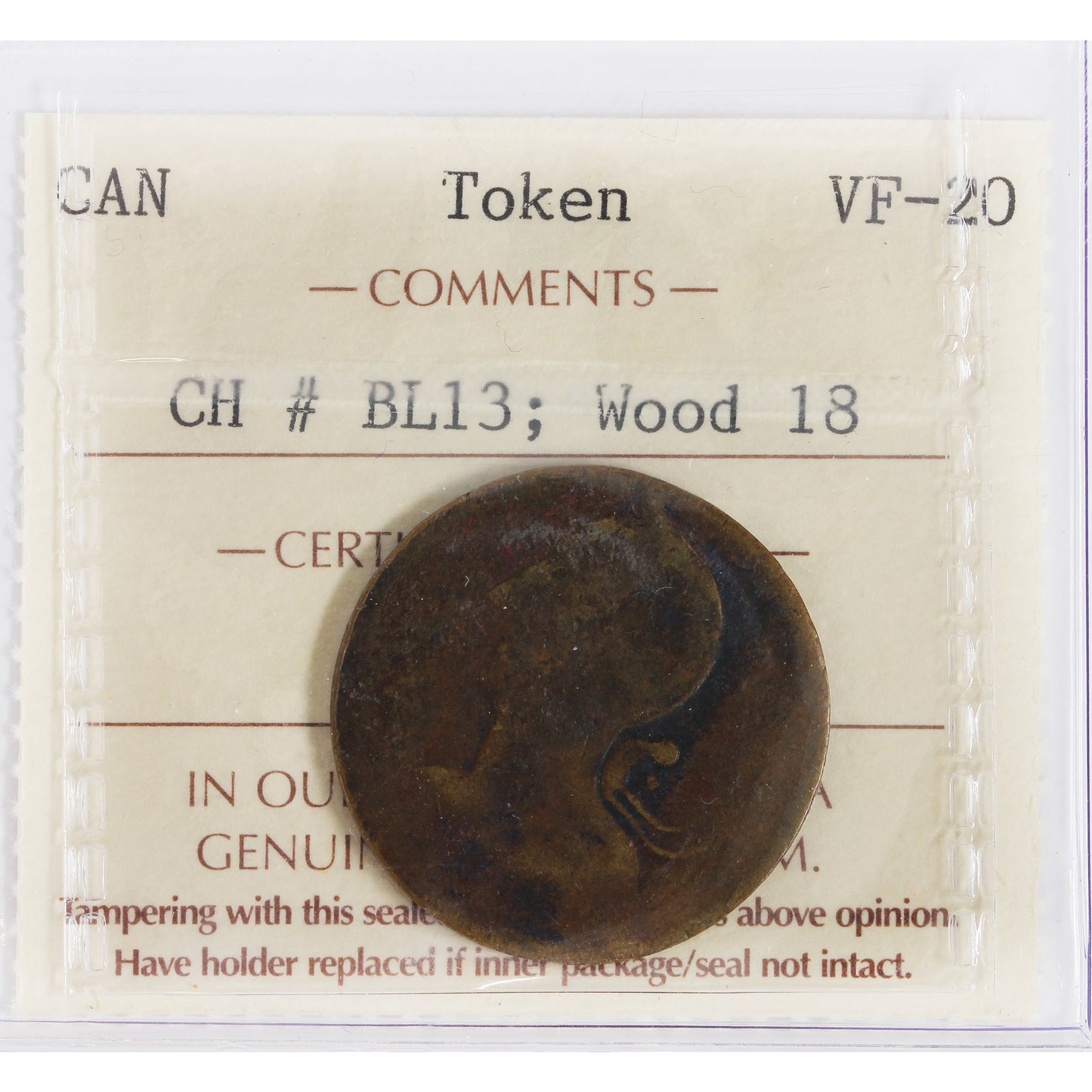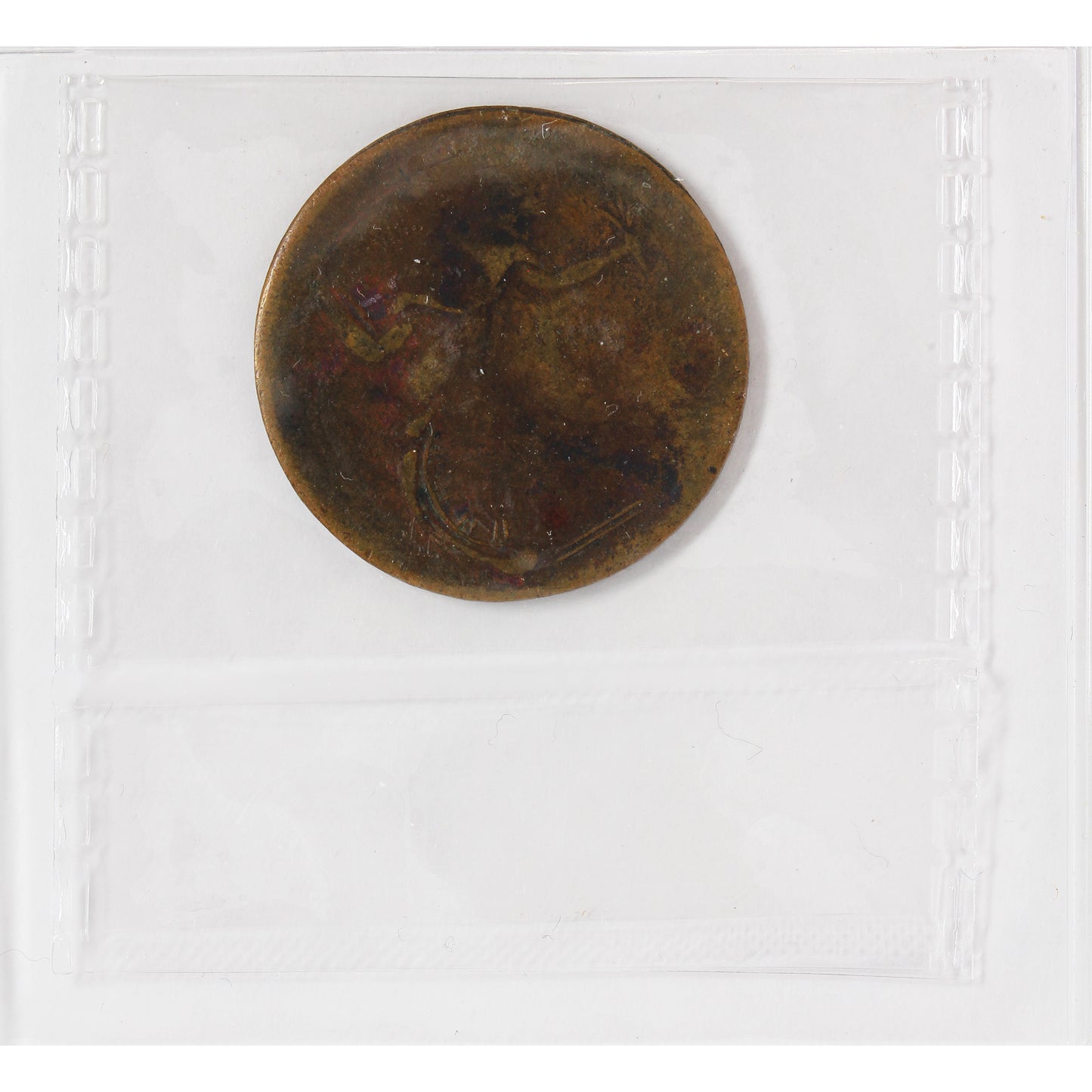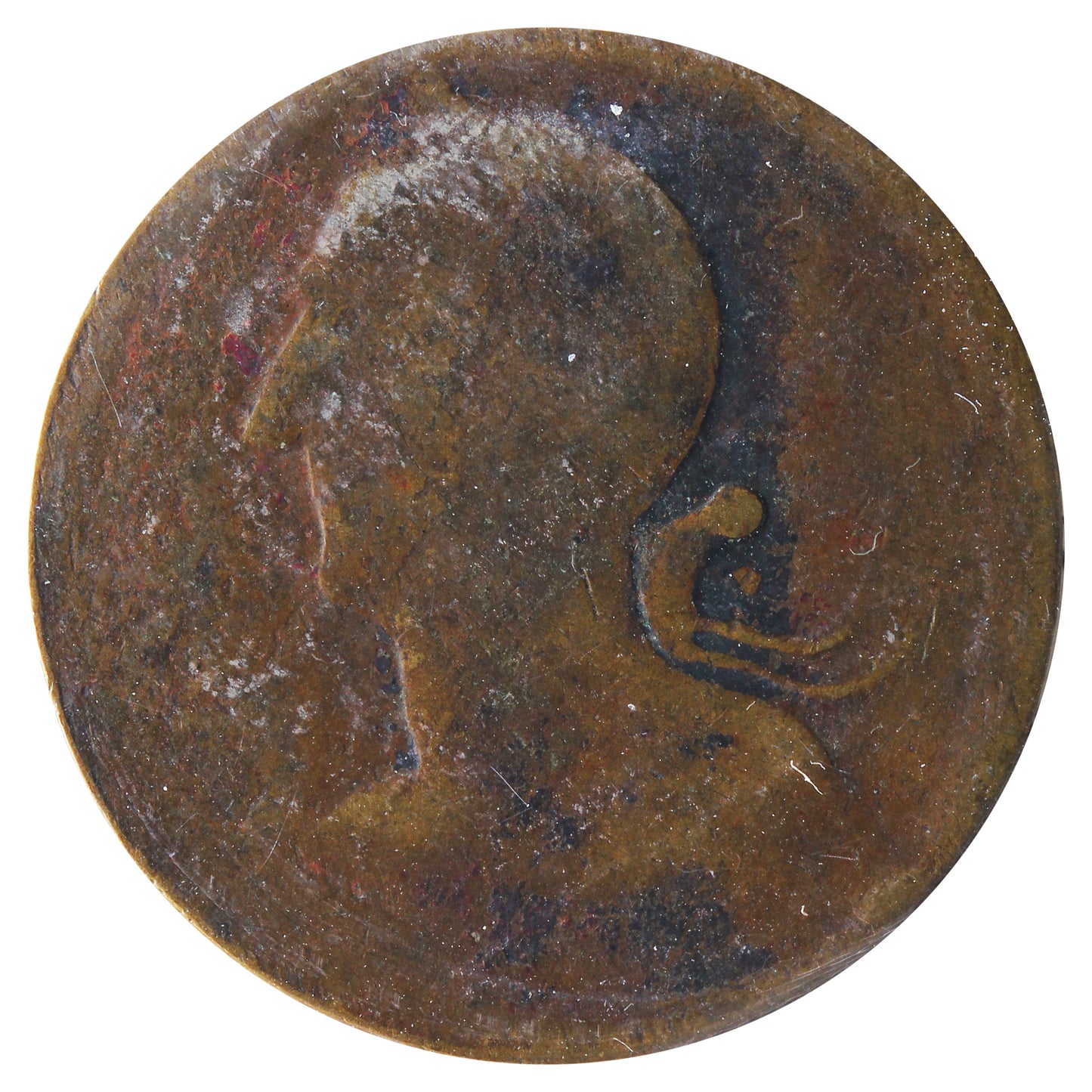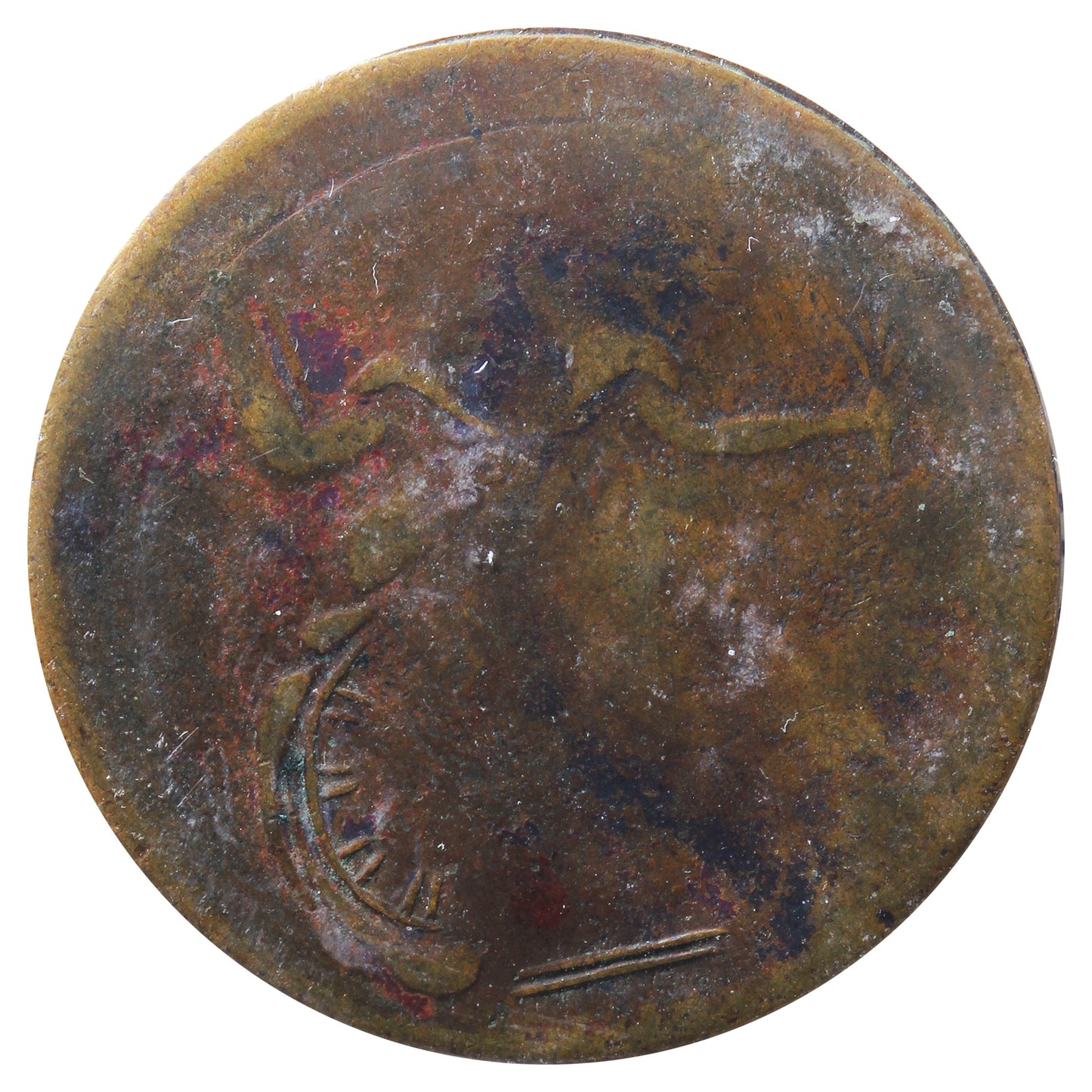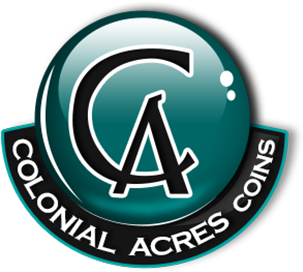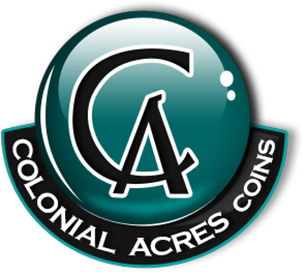Colonial Acres Coins
SKU: SKU:BT-0815
BL-13 Blacksmith Brass Token ICCS Certified VF20 Wood 18
BL-13 Blacksmith Brass Token ICCS Certified VF20 Wood 18
Regular price
$161.50
Regular price
$190.00
Sale price
$161.50
Unit price
per
We buy at $0.00
◎ 1 Available
Couldn't load pickup availability

FREE SHIPPING OVER $500
BL-13 Blacksmith Brass Token ICCS Certified VF-20 Wood 18
Supposedly, in about 1835, a blacksmith in Montreal began to make his own halfpennies to pay for liquor. He made counterfeits of the battered, worn-out, old English and Irish regal halfpennies of George III. His dies were purposely left unfinished in order to create the appearance of a badly worn token. His halfpennies were then artificially darkened, probably by overheating, to create the illusion of age. Only a crude outline of the type was cut, without a date or legend. A peculiarity of these pieces is that the types are almost always reversed because the die-sinkers cut the types on the dies to face the same way as on the tokens they used as models. These pieces were accepted in trade because of the insatiable demand for small change in Lower Canada at the time, particularly in Montreal.
Obverse: Bust facing left with a long neck, strong chin, angular forehead and a thin, pointed nose. The ribbon of the chaplet is ties with a long, slender bow.
Reverse: A headless Britannia seated facing right with a thick right arm. The drapery under the right arm is large and angular. The exergue line does not reach the shield.
Specifications:
Composition: Brass
Weight: 5.4 to 6.3 g
Diameter: 27.0 mm
Edge: Plain
Die Axis: ? ?
Supposedly, in about 1835, a blacksmith in Montreal began to make his own halfpennies to pay for liquor. He made counterfeits of the battered, worn-out, old English and Irish regal halfpennies of George III. His dies were purposely left unfinished in order to create the appearance of a badly worn token. His halfpennies were then artificially darkened, probably by overheating, to create the illusion of age. Only a crude outline of the type was cut, without a date or legend. A peculiarity of these pieces is that the types are almost always reversed because the die-sinkers cut the types on the dies to face the same way as on the tokens they used as models. These pieces were accepted in trade because of the insatiable demand for small change in Lower Canada at the time, particularly in Montreal.
Obverse: Bust facing left with a long neck, strong chin, angular forehead and a thin, pointed nose. The ribbon of the chaplet is ties with a long, slender bow.
Reverse: A headless Britannia seated facing right with a thick right arm. The drapery under the right arm is large and angular. The exergue line does not reach the shield.
Specifications:
Composition: Brass
Weight: 5.4 to 6.3 g
Diameter: 27.0 mm
Edge: Plain
Die Axis: ? ?
